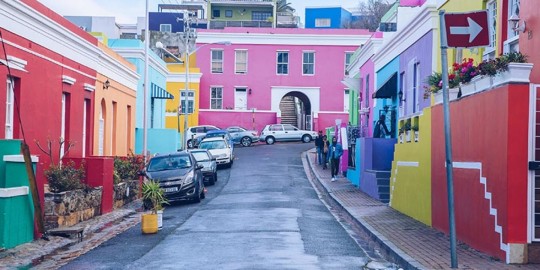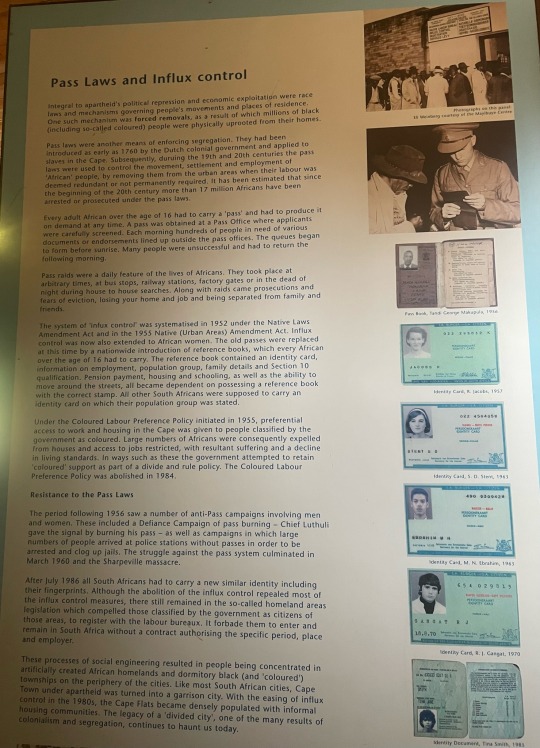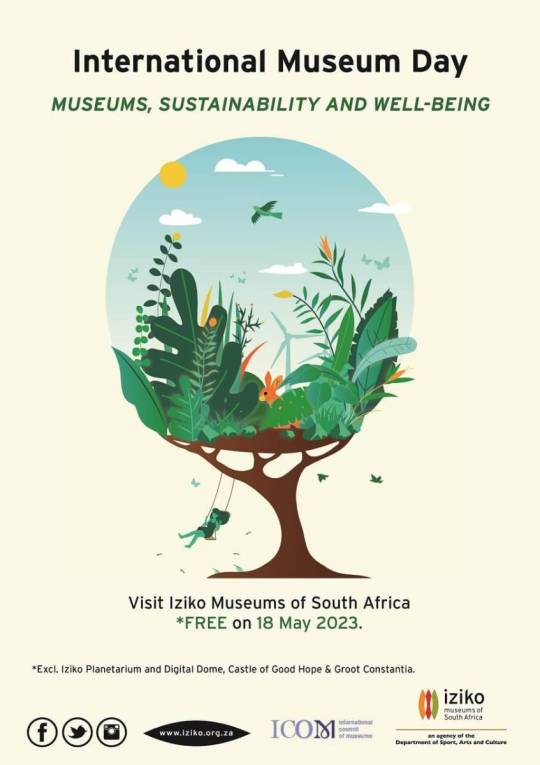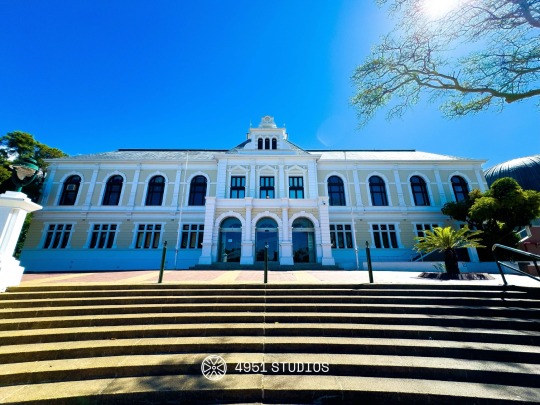#iziko
Text
REMINDING THE ANCESTORS

View On WordPress
#A Luta Continua#ANC#Apartheid#Cyril Ramaphosa#Iziko#Slave Lodge#South Africa#South African Democracy#South African Government#South African History
2 notes
·
View notes
Text

Firetail with His Trainer by the Rubbing-Down House on Newmarket Heath, George Stubbs, 1773
#art#art history#George Stubbs#animalier#animals in art#horse#horses#genre painting#British art#English art#18th century art#Iziko South African National Gallery#oil on panel
40 notes
·
View notes
Text
Discover the Hidden Beauty of Beaverlac Nature Reserve
Beaverlac Nature Reserve may have the word "beaver" in its name, but no beavers can be found here! However, what it lacks in semi-aquatic rodents, it makes up for in awe-inspiring natural beauty. From rugged rock formations to tranquil streams, this reserve has it all. Whether you're an intrepid adventurer or a nature enthusiast, Beaverlac is the perfect place to lose yourself in the magic of the great outdoors. So pack your bags, leave the hustle and bustle of city life behind, and get ready to discover the hidden beauty of this slice of South African paradise. If you're an outdoor enthusiast or simply seeking a break from urban life, Beaverlac Nature Reserve in South Africa is the perfect destination. Tucked away in the Cederberg Mountains, this hidden gem is a haven of natural beauty, offering stunning mountain views, serene rivers and waterfalls, and an abundance of flora and fauna.
#cape town tourism attractions#iziko bo kaap museum#waterfront food market#Vegan restaurants cape town#Oranjezicht city farm market#affordable spas in cape town#Grand west activities
1 note
·
View note
Text
Thanks to @plokool and @killdeercheer for helping me put this together in a way that wasn't too usa or europe biased ^_^
237 notes
·
View notes
Note
Iziko South African museum, Cape Town

9 notes
·
View notes
Text

Cape Tourism- Bo-Kaap Museum into Social History Museum
The Iziko Museums of Cape Town encompass the Bo-Kaap Museum on Wall Street. It is currently being transformed into a social history museum that will tell the cultural and political history of the local population. The museum is housed in an original 1768 house that has been furnished to look like a Muslim family's home from the 19th century.
Authors at Cape Tourism say that you'll relive the Bo-Kaap community's history and learn about its customs and beliefs as well as how apartheid's political ideology and discriminatory laws affected it.
#cape tourism#toursim#bo-kaap museum#history#social#society#cultural#culture#heritage#political#travel#travelling#south africa#africa#cape town
3 notes
·
View notes
Text
Kapstadt, 24.01.23
Heute morgen hat es geregnet, so dass wir spontan umgeplant haben und zum Iziko South African Museum gefahren sind. Das South African Museum ist das älteste Museum Südafrikas und gilt mit Recht als eines der besten im Land. Die faszinierenden Ausstellungen veranschaulichen Naturgeschichte und Archäologie und zeigen afrikanische Kunst, Felsmalereien und Steinzeitwerkzeuge.
Am Nachmittag haben wir die Waterfront besucht, hauptsächlich weil es mir nicht gelungen war, Tickets für eine Fähre online zu buchen, also musste ich vor Ort hin. Als ich dem Typen am Schalter sagte, dass es online nicht möglich war, sagte er: Ja, ja, er kenne das Problem. Ohne Entschuldigung oder weitere Erklärung. Eine typisch afrikanische Reaktion, nach dem Motto: So ist das eben.
Danach sind wir an der Waterfront entlang geschlendert, wie viele Hunderte andere Touristen. Hier gibt es viele Geschäfte und Restaurants mit schönem Hafenpanorama, so dass es das meistbesuchte Viertel von Kapstadt ist.
Wer nichts mit dem Begriff load shedding anfangen kann, lernt die Bedeutung schnell kennen, wenn er Südafrika besucht. Es bedeutet Stromausfall, aber nicht plötzlich, sondern geplant und regelmäßig. Es gibt hier 8 Stufen des Stromausfalls, von Stufe 1 (2,5h Ausfall) bis Stufe 8 (13,5 h von 24h Stromausfall). Jeder Tag hat eine andere Stufe; meistens hat man die Stufen 2 bis 4. was bedeutet zwischen 5 und 7,5 h Stromausfall. Morgen haben wir zB Stufe 4. Es gibt sogar eine App, wo man sich informieren kann, weil es für jede Gegend unterschiedlich ist. Wenn der Stromausfall nachts ist, geht es ja, weil dann nur die Klimaanlage ausfällt, aber wenn man Kaffee kochen will oder etwas in der Mikrowelle erhitzen will oder WiFi nutzen will, nervt es schon. Zum ersten Mal hat es mich erwischt im Supermarkt, als es plötzlich dunkel wurde und dann nach einigen Minuten die Notbeleuchtung über Generator anging.
2 notes
·
View notes
Text
Spent two days at the Iziko Museums Slave Lodge in Cape Town. This was the first time in my 51 years of life that I heard Indians were brought to South Africa as slaves.


Fact: for the total slave population in Cape Town 51% were from within Africa, 25.9% from India, 22.7% from Southeast Asia, and 1% from Malaysia. This was all the work of the Dutch East India Company (VOC).
Check out the map above to see the routes that brought slaves to the Cape.
In my heart, I've always felt that me as South Asian stand on the shoulders of Blacks that helped to gain my peoples’ freedom. Now, it's concrete proof.


When I did the walking tour on slavery and apartheid, the guide named Wilmarie February narrated the story that individuals got their family (or surname/last name) based on the month the slave ship they were on arrived. Wilmarie’s family arrived in February.

Black, Colored, Malay people had to carry a pass book with them at all times in case they were running late and were out in Cape Town during curfew hours. People of Color were not allowed in certain areas after specified hours. Above are examples of passes that must be carried otherwise you would be heavily fined or imprisoned. Black/Colored/Malay people hated these passes so much that they referred to them as Dumpasses.

The Republic of Transkei was an unrecognized state in the southeastern region (now Eastern Cape) of South Africa from 1976 to 1994. Transkei represented a significant precedent and historic turning point in S. Africa’s policy of apartheid and separate development. Throughout its existence, it remained internationally unrecognized, diplomatically isolated and politically unstable.



I honor, celebrate and lift up resistance!
✊🏽✊🏽✊🏽
3 notes
·
View notes
Text
Un equipo internacional ha descubierto en Namibia un fósil del Paleozoico de gran tamaño al que han denominado Gaiasia jennyae. Este animal, que tenía un tamaño mayor que una persona, era un tetrápodo con una gran cabeza, dientes gigantes y vivía en el fondo de los lagos.
El esqueleto casi completo y articulado de ‘Gaiasia jennyae’ después de su preparación. / C. Marsicano
40 millones de años antes de que evolucionaran los primeros dinosaurios, en la era glacial del Paleozoico tardío, un depredador vivía en el fondo de pantanos y lagos. Allí esperaba con la mandíbula abierta para atrapar a cualquier presa que nadase cerca. Este fósil, llamado Gaiasia jennyae, se trata de un tetrápodo y solo su cráneo medía más de dos pies de largo, aproximadamente 60 centímetros.
La criatura lleva el nombre de la Formación Gai-As en Namibia, donde fue encontrada, y de Jenny Clack, una paleontóloga especializada en la evolución de los primeros tetrápodos. Estos animales eran vertebrados de cuatro extremidades que evolucionaron a partir de peces con aletas lobuladas y dieron origen a anfibios, reptiles, aves y mamíferos.
“Gaiasia jennyae era más grande que una persona. Tiene una cabeza de gran tamaño y plana, en forma de asiento de inodoro, lo que le permitía abrir la boca y succionar a sus presas. Toda la parte frontal estaba llena de dientes gigantes”, declara Jason Pardo, becario postdoctoral de la National Science Foundation (NSF) en el Field Museum de Chicago y coautor principal del estudio publicado en Nature.
La coautora principal del trabajo, Claudia Marsicano, de la Universidad de Buenos Aires, y sus compañeros de equipo encontraron los bloques de fósiles esparcidos sobre una de las laderas de Gai-as durante una campaña en 2015. “Una vez que nos dimos cuenta de que teníamos un cráneo comenzamos a buscar entre los cientos de pedazos de concreciones que había en los alrededores hasta completar el ejemplar”, declara Marsicano a SINC.
“Posteriormente, el material fue exportado a Sudáfrica, al Iziko Museum de Ciudad del Cabo, para su preparación manual por un técnico especializado. Este trabajo de preparación y extracción de la roca que lo contenía llevó casi tres años”, expresa Marsicano. No fue hasta el 2019 que empezó el estudio de detalle de los bloques de fósiles. La investigadora afirma que llevó mucho tiempo y esfuerzo de equipo.
“Gaiasia es único en muchos aspectos, pero el más importante es que es mucho más grande que cualquier otro tetrápodo primitivo”, declara Pardo a SINC. “Hay otras diferencias como la forma en que la cabeza se une a su cuello, la construcción de las mandíbulas y lo ancho y plano que es el paladar, pero su tamaño es la característica más llamativa y única”, añade el investigador. La criatura, según el autor, es similar a una salamandra, en concreto por su cabeza ancha y plana
La clasificación que los investigadores llevaron a cabo se basa en los fósiles de al menos cuatro individuos incompletos. Claudia Marsicano y sus compañeros afirman que esta criatura tiene un cráneo mucho mayor que el de sus parientes de Europa y Norteamérica.
El material obtenido lo compararon con otros animales de la época, lo que les permitió obtener una idea más próxima de las características corpóreas del animal, así como de su posible comportamiento.
La investigadora Claudia Marsicano junto al fósil completo de ‘Gaiasia jennyae’ en Namibia. / Roger M.H. Smith
Distribución más global
Además de su gran tamaño, hay varios elementos que hacen especial a este animal, según los investigadores. Aunque hoy en día Namibia está justo al norte de Sudáfrica, hace 300 millones de años estaba todavía más al sur, concretamente, cerca del paralelo 60, casi a la par con el punto más al norte de la Antártida actual.
En ese momento, la Tierra se acercaba al final de una era glacial. El suelo pantanoso cerca del ecuador se estaba secando y volviéndose más forestal. Por la zona cercana a lo...
0 notes
Text
The Educational Tourist Places in South Africa

South Africa is not only rich in natural beauty and wildlife but also boasts a diverse array of educational attractions that offer insights into its complex history, cultural heritage, and scientific achievements. Here are some educational tourist places in South Africa that are worth exploring:
You can read Top Tourist Attractions in Africa That You Have to See with Your Own Eyes in the following article
Robben Island Museum: A Lesson in South African History
Robben Island, located off the coast of Cape Town, is synonymous with the struggle against apartheid. The Robben Island Museum offers guided tours conducted by former political prisoners, providing a poignant insight into South Africa's political history and the incarceration of Nelson Mandela.
Apartheid Museum: Understanding South Africa's Past
Located in Johannesburg, the Apartheid Museum chronicles the rise and fall of apartheid through multimedia exhibits, artifacts, and personal accounts. Visitors can explore the apartheid era, its impact on South African society, and the country's journey to democracy.
Cradle of Humankind: Exploring Human Evolution
The Cradle of Humankind, a UNESCO World Heritage Site near Johannesburg, is renowned for its complex of limestone caves that have yielded some of the world's oldest hominid fossils. Visitors can tour the Sterkfontein Caves and Maropeng Visitor Centre to learn about human evolution and paleoanthropology.
South African Museum, Cape Town: Natural History Exhibits
The South African Museum in Cape Town houses extensive collections of fossils, minerals, and artifacts that showcase the natural history of South Africa and the broader African continent. Exhibits cover topics ranging from ancient civilizations to biodiversity and environmental conservation.
Hector Pieterson Museum: Commemorating the Soweto Uprising
The Hector Pieterson Museum in Soweto, Johannesburg, commemorates the Soweto Uprising of 1976, a pivotal moment in the anti-apartheid struggle. Named after a 12-year-old boy killed during the protests, the museum explores the events leading to the uprising and its impact on South African society.
District Six Museum: Reflecting on Forced Removals
The District Six Museum in Cape Town documents the forced removals of more than 60,000 residents from the multicultural District Six neighborhood during apartheid. Through oral histories, photographs, and personal belongings, the museum preserves the memories of this vibrant community and highlights the ongoing struggle for justice.
Nelson Mandela Capture Site: History of Mandela's Arrest
Located near Howick in KwaZulu-Natal, the Nelson Mandela Capture Site commemorates the arrest of Nelson Mandela in 1962. A sculpture marks the spot where Mandela was captured, and visitors can learn about his life, activism, and legacy through interactive exhibits.

Freedom Park, Pretoria: Symbol of South Africa's Struggle
Freedom Park in Pretoria is both a memorial and a museum that honors South Africa's diverse cultural heritage and pays tribute to those who fought for freedom and democracy. The park features various monuments, gardens, and exhibitions that explore South Africa's history from pre-colonial times to the present day.
Iziko Planetarium and Digital Dome, Cape Town: Astronomy Education
The Iziko Planetarium and Digital Dome in Cape Town offers immersive astronomy shows and educational programs that explore the wonders of the universe. Visitors can enjoy virtual journeys through space, learn about celestial phenomena, and participate in interactive workshops.
University of Cape Town Botanical Garden: Botanical and Environmental Studies
The University of Cape Town Botanical Garden is a living laboratory for botanical research and environmental education. Located on the slopes of Table Mountain, the garden showcases a diverse collection of indigenous plants, including rare and endangered species. Visitors can explore themed gardens, learn about plant conservation efforts, and enjoy guided tours.
These educational tourist places in South Africa offer valuable insights into the country's history, culture, and scientific achievements. Whether you're interested in apartheid history, human evolution, natural history, or astronomy, South Africa has much to offer in terms of educational exploration and discovery.
0 notes
Text
While it is challenging to provide an exhaustive list, here are ten notable exhibitions that included Ndebele mural paintings, showcasing the vibrant and culturally significant art form:
"Magical Symbols: The Art of the Ndebele" - This exhibition took place at the National Museum of African Art in Washington, D.C., in 1985. It focused on the art and culture of the Ndebele people, prominently featuring their mural paintings.
"Indigenous Voices: Ndebele Art and Culture" - Held at the Iziko South African National Gallery in Cape Town, South Africa, in 1992, this exhibition celebrated Ndebele art forms, including their renowned mural paintings.
"The Ndebele: Art and Culture of a South African People" - This exhibition was hosted by the Fowler Museum at the University of California, Los Angeles, in 2001. It presented an extensive collection of Ndebele artworks, including their distinctive mural paintings.
"Transcape: The Cultural Legacy of Ndebele Women" - Taking place at the Newark Museum in Newark, New Jersey, in 2001, this exhibition explored the rich cultural heritage of Ndebele women, featuring their mural paintings as a significant aspect of their artistic expression.
"Celebrating Ndebele Art" - Held at the British Museum in London, United Kingdom, in 2005, this exhibition showcased Ndebele art in various forms, including mural paintings, as a testament to their cultural identity and artistic prowess.
"Ndebele: The Art of Southern Africa" - This exhibition, organized by the National Gallery of Australia in Canberra, Australia, in 2009, highlighted the striking visual language and techniques used in Ndebele mural paintings.
"Ndebele: Art of an African Tribe" - Taking place at the Tropenmuseum in Amsterdam, Netherlands, in 2013, this exhibition focused on the artistry and symbolism present in Ndebele mural paintings, capturing their cultural significance.
"Ndebele: The Art of Southern Africa's Largest Ethnic Group" - This exhibition was held at the Art Institute of Chicago in Chicago, Illinois, in 2016. It showcased the diversity and intricacy of Ndebele art, including their renowned mural paintings.
"Ndlela Ntombi: Ndebele Art and Culture" - Organized by the Johannesburg Art Gallery in Johannesburg, South Africa, in 2018, this exhibition provided an immersive experience into Ndebele art and culture, featuring their mural paintings as central elements.
"Ndebele: Art of a Resilient People" - This exhibition took place at the Museum of African Art in Belgrade, Serbia, in 2020. It highlighted the resilience and creativity of the Ndebele people, showcasing their mural paintings as powerful expressions of cultural identity.
These exhibitions served to promote and celebrate the rich cultural heritage of the Ndebele people, specifically showcasing the beauty and significance of their mural paintings as important contributions to the world of art.
0 notes
Text
Happy International Museum Day
Happy International Museum Day: Visit Iziko Museums for free in Cape Town.
#CapeTownForFree #TravelBlog #Free #Museums #Iziko #IzikoMuseums #SA #CapeTown #LoveCapeTown #GoodCause #CultureConnectsUs
Join Iziko Museums of South Africa in commemorating International Museum Day.
On Thursday, 18 May 2023, Iziko Museums of South Africa will be commemorating International Museum Day, with FREE* entry to selected Museums.
*Free entry excludes Iziko Planetarium and Digital Dome, Castle of Good Hope and Groot Constantia.

View On WordPress
0 notes
Text

Cape Town, South Africa — It’s a bit tricky to catch Table Mountain just right — clear and not too windy… so the cable car isn’t a problem. Today we set out early hoping to catch it right but the wind played the devil and the cable car wasn’t running. The views of Table Mountain and Signal Hill were still spectacular. What a drive over the pass to Camps Bay where we had a little breakfast looking out at the white sand beach. Camps Bay would be another great town to spend time in. Wandered around downtown exploring some of the shops and Chris also got a haircut from a local lady who was hoping to save him. Depressing as it was we visited the Iziko Slave Lodge where the brutal and dark nature of humanity was on full display. Sometimes we can be such cruel humans to one another. To wash off the funk, we strolled through the “Company Park” gardens and on into the bright Muslim area of Bo-Kaap. Met my moon-boot soul mate James during dinner at the Cape Town Fish Market.








0 notes
Photo

#SeabirdSaturday / #SeabirderSaturday, Hidden Details of Cape Town version, Part 24...Local pelagic seabird mount display at the Iziko South African Museum. I will never shake my love for natural history museums & specimens...😻 Missing having the time (& consistent weather) to do my own prep! #seabirds #albatross #giantpetrel #petrel #skua #jaeger #prion #taxidermy #museum #naturalhistory #specimens #articulations #mounts #display #iziko #birdsofsouthafrica #details #hidden #secret #CapeTown #TravelChatSA #southafrica (at Iziko South African Museum) https://www.instagram.com/p/CDEk69PAVua/?igshid=10tb9ie0a886a
#seabirdsaturday#seabirdersaturday#seabirds#albatross#giantpetrel#petrel#skua#jaeger#prion#taxidermy#museum#naturalhistory#specimens#articulations#mounts#display#iziko#birdsofsouthafrica#details#hidden#secret#capetown#travelchatsa#southafrica
1 note
·
View note
